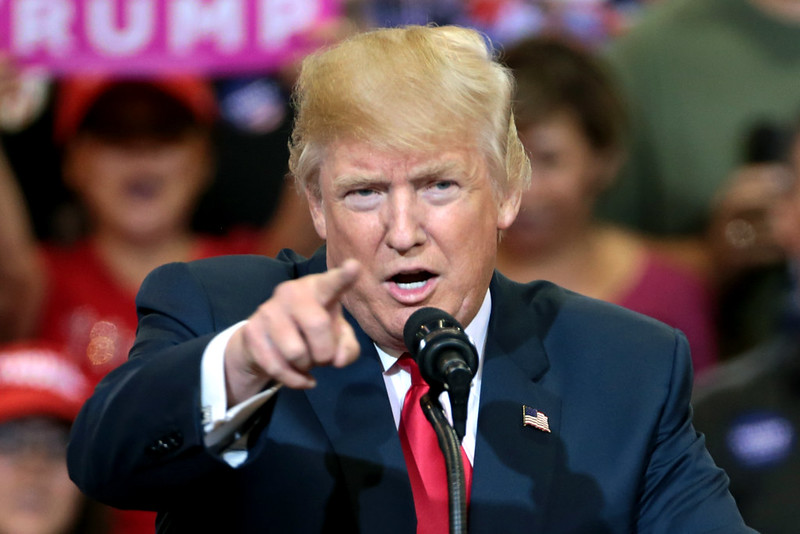As the 2020 election draws nearer and families wait to hear if schools will re-open in the fall, the COVID-19 pandemic continues to be increasingly politicized—instead of being treated as the public health crisis it is.
As a result, elected officials are finding it increasingly difficult to reach a consensus on how best to support struggling Americans. Congress has been debating a new COVID-19 stimulus bill for weeks, with Democrats pushing for a $2 trillion relief package—slightly less than the CARES Act four months ago, which was approved 96-0 in the Senate. But Republicans are unwilling to provide that much aid, and talks to pass a new bill fell apart last week.

In an unusual and highly controversial move on Saturday, Trump attempted to take matters into his own hands—skirting the need for Congressional approval by signing new executive orders.
Perhaps unsurprisingly, the president’s promises are already being scrutinized and are unlikely to actually help the American people. In fact, he will likely face legal challenges—Congress is supposed to control taxes and spending, not the president.
Here’s what Trump’s new executive actions actually mean.
Unemployment Benefits
Trump claims his new policies will provide an additional $400 per week in unemployment benefits. But this policy will be ineffective at best and financially dangerous at worst. The previous Congressional policy allowed Americans to receive $600 from the federal government, on top of their state’s normal benefits.
Now, states will be responsible for covering 25 percent of the additional $400.
Many state governments are already struggling to stay afloat and have been asking for support from the federal government for months. Therefore, they may be forced to “opt out” of the new benefits—simply because they can’t afford the additional weekly $100 benefit per person. This means Trump’s promised benefits might never materialize for many.
“This is an empty promise to unemployed people,” said Rebecca Dixon, executive director of the National Employment Law Project.
Dixon continues:
“What we had was working for millions of people and supporting our struggling economy—and the support needed to be expanded to cover all unemployed workers. … This is particularly true for underpaid Black, Latinx and Indigenous workers, most of all women, who don’t have wealth or savings to cover the basics, much less emergency expenses. And this will harm Black workers who disproportionately live in states with the lowest UI benefit levels.
“Given a finite pool of funds and administrative hurdles to get the benefit running, this will further exacerbate the inequality between states. States that have the most sophisticated systems may be able to stand up this program eventually, but those states that have been faltering due to decades of neglect or outright sabotage will be less likely to see any of this money. … The states with the most unstable and impenetrable systems also tend to be states with the highest populations of Black and Latinx workers.”
Payroll Tax Deferral
Payroll taxes will be halted from September 1 through December 31 for workers who earn less than $4,000 every two weeks (about $104,000 per year). For those few months, workers will receive larger paychecks than normal—but it won’t change the amount they owe. It’s simply a delay in collecting taxes, not a tax cut. In fact, some companies may simply continue taking the money out of their worker’s paychecks and putting it aside until the taxes are due.
Congress already considered this policy, but it was struck down on both sides of the political aisle. It won’t help those who are unemployed, and it could also put Social Security and Medicare benefits at risk if the deferral becomes a permanent tax cut—which Trump has said he plans to do if reelected.
Housing Benefits
Trump’s memo addressing housing is possibly the weakest of the bunch. Instead of reinstating the ban on evictions that expired in July, Trump simply suggests the CDC and Department of Health and Human Services should consider whether another eviction ban is needed.
He also doesn’t provide any financial assistance for renters—even though 30-40 million people in the U.S. are at risk of being evicted. All in all, Trump’s memo has the appearance of helping out renters, while actually giving them nothing but empty platitudes.
Student Loans
Student loans is the only area of these four in which Trump actually has legitimate control. His new plan extends the current policy to allow students to delay payments until December 31. He also promised interest on federally-held loans will remain paused until payments restart on January 1.
While it’s a good start to supporting students through this crisis, Democrats in Congress have been pushing for extending the deferral for another year, and pausing interest on private loans as well.
With no stimulus checks, rent assistance or even legitimate tax breaks, Trump’s new actions are unlikely to provide any substantive relief to the 32 million Americans claiming unemployment. It’s very likely that the executive orders will be caught up in legal battles that could prevent the policies from ever going into effect.
And even if the policies do manage to proceed, it’s simply no substitute for an actual relief bill.





